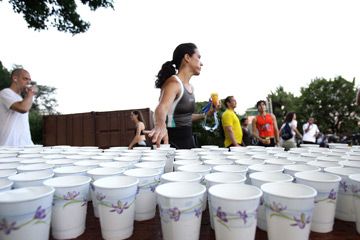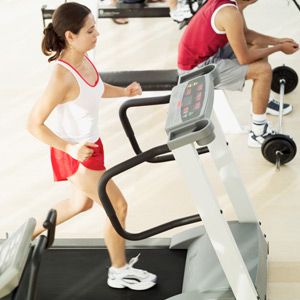Whether you're ready to take your body to the next level in physical competition or you're just looking for a fun way to challenge yourself, triathlons offer a little bit of something for everyone. A triathlon is a race that consists of three activities completed back-to-back: swimming, biking and running.
Do you have to be an athlete (or even in shape) to take on such a monumental challenge? Nope, almost anyone can compete in a triathlon, no matter their size, shape or experience level. And the best part about training for, and competing in, a triathlon is that even if you're not in peak form to start with, you're bound to get in good shape in the process.
Advertisement
New triathletes can choose from races ranging from less than two hours to more than 15 hours, and covering anywhere from 16 miles (26 kilometers) to more than 140 miles (225 kilometers). Some common types of triathlon include:
- Sprint triathlon: You'll swim about half a mile (750 meters), bike 12.4 miles (20 kilometers) and run 3.1 miles (5 kilometers).
- Olympic triathlon: You'll swim 0.9 miles (1.5 kilometers), bike 24.8 miles (40 kilometers) and run 6.2 miles (10 kilometers).
- Half-Ironman: You'll swim 1.2 miles (1.9 kilometers), bike 56 (90 kilometers) miles and run 13.1 miles (21.1 kilometers).
- Full Ironman: You'll swim 2.4 miles (3.8 kilometers), bike 112 miles (180 kilometers) and run 26.2 miles (42.2 kilometers). That's right -- in a full Ironman, after you swim and bike for more than a hundred miles, you're expected to run a full marathon [sources: Beginner Triathlete, totaltriathlon].
If you're a beginning triathlete, you'll probably set your sights on a sprint race. It's a great way to get your feet wet, so to speak, and it's a good starting point if you're considering working your way up to more difficult events.
In all, it will take between 12 and 18 weeks to prepare and train for a sprint triathlon. In this article we'll look at what it takes to ready yourself for each part of the event, including the equipment you need, the techniques to develop and the amount of time to spend training. Preparing for a triathlon involves a lot of hard work, but the payoff (both physically and mentally) can be huge. So if you're thinking about becoming a first-time triathlete, read on to learn how to prepare yourself for what is sure to be an intense, but rewarding, experience.
Advertisement


